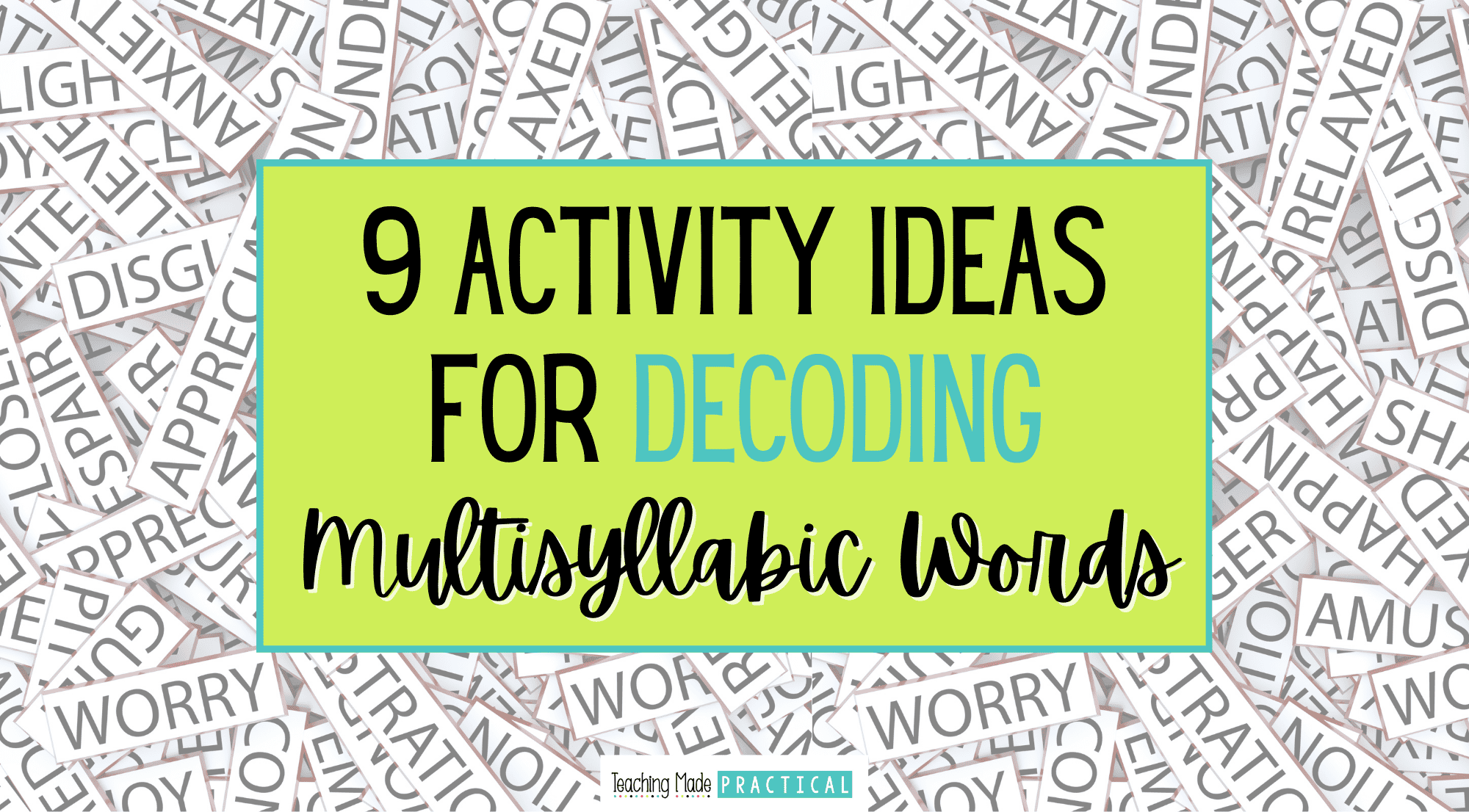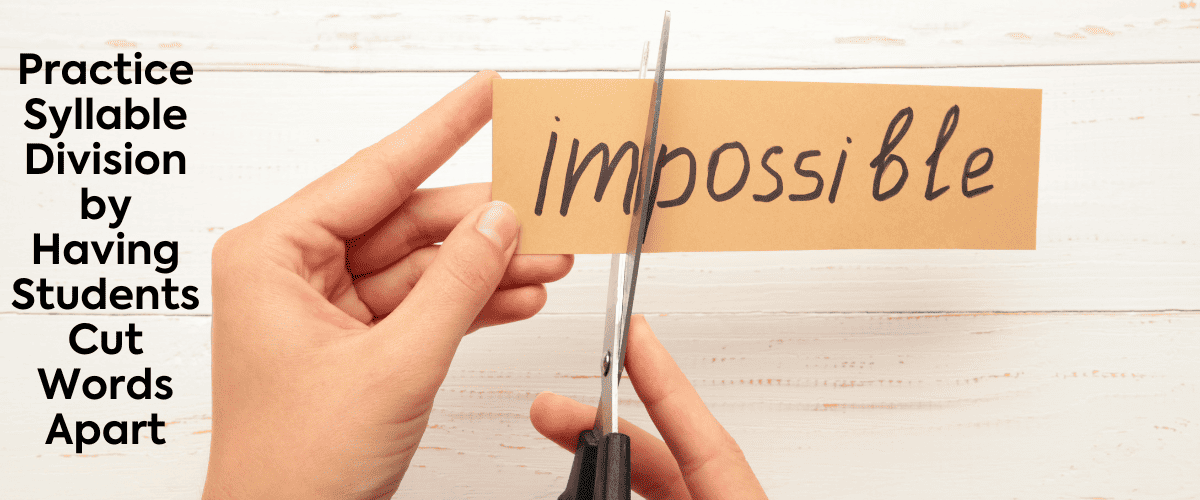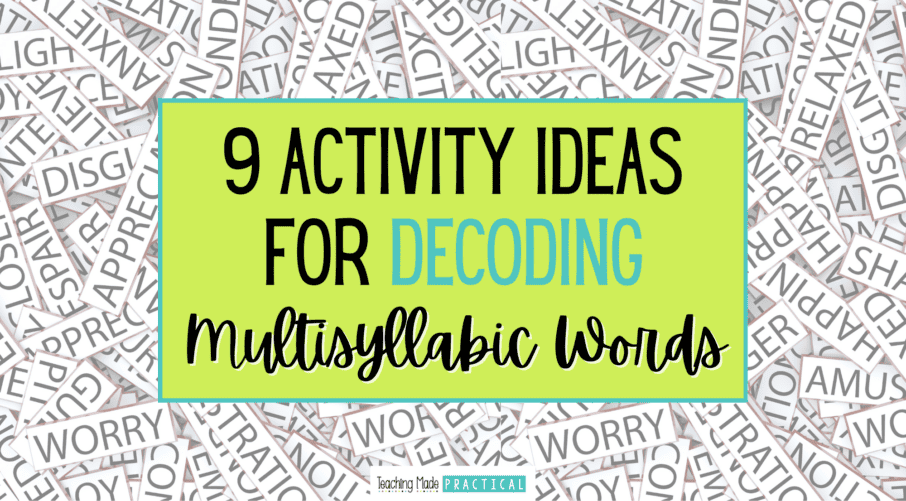
Activities to Practice Reading Multisyllabic Words
1. Model Decoding Multisyllabic Words and Phrases
This one is obvious, but so important that it's worth mentioning. Students need plenty of opportunities to observe capable readers decoding words. Taking just a few minutes every day to model different strategies will be hugely beneficial. And best of all, this is a no prep activity! The hardest part is finding and choosing multisyllabic words that are decodable!
This Multisyllabic Word List has an extensive list of 2, 3, 4, and 5 syllable words to make this easier for you. Or, step up your modeling game with this List of Decodable Multisyllabic Phrases and Sentences.
2. Make a Word Wall
3rd, 4th, and 5th grade students are past needing an alphabet word wall. Use your wall space more wisely by creating a multisyllabic word wall that students can reference. This is easy to adapt to whatever skill you are focusing on. You could organize your word wall by:
- Number of Syllables
- Prefixes and Suffixes
- The 6 Syllable Types
- Compound Words
- Root Words
Add words to your word wall as you come across them in texts or lessons.
You might also like these other word wall ideas for upper elementary students.
3. Go On a Multisyllabic Word Scavenger Hunt
Have your upper elementary students go on a scavenger hunt for multisyllabic words. They can look for words on posters, word walls, signs, books, etc.
This activity is great because it is no prep and so easily adapted for whatever decoding skill you are working on. If you are focusing on closed syllables, have students go on a hunt for words with closed syllables. If you are focusing on prefixes, have them go on a hunt for words with prefixes.
They can use pencil and paper to make a list, or whiteboards and dry erase markers if you have them.
You can find more ideas about using a scavenger hunt for word study here.
4. Break Multisyllabic Words Apart

5. Make Multisyllabic Words
Provide students with cards that have common syllables, prefixes, suffixes, and base words, and see how many words students can make using those cards! This is a great interactive activity, but it does take a little advance planning to figure out what syllables go together to make words.
This Decoding Multisyllabic Words Bundle includes this fun activity and makes it no prep for you!
6. Word Sorts
Word sorts are always a valuable word study skill. They help students learn to recognize patterns and build schema for different phonics skills. You can have students sort by:
- number of syllables
- the 6 syllable types
- prefixes, suffixes, or base words
- compound words
- different phonics patterns
Looking for a no prep option? These 6 Syllable Type Mazes are a fun twist on the usual word sort and are ready-to-print!
This no prep Decoding Multisyllabic Words Bundle includes:
- Decodable Multisyllabic Word Lists
- No Prep Prefix, Suffix, and Base Word Activities
- 6 Syllable Types Word Sort Mazes
7. Create and Read Nonsense Multisyllabic Words
Sometimes 3rd, 4th, and 5th grade students can read multisyllabic words simply because they have been exposed to them before, but not because they actually understand how to decode them. Using nonsense words is a great way to assess what your students actually understand.
Write some common syllables on cards and put them together in a variety of ways to create nonsense words for students to read.
For a little extra fun, create one GIANT nonsense word for students to read, something like:
numfermongoblathermationdiffle
This is a silly but engaging way to practice syllable division rules and build student confidence.
8. Have Students Read Multisyllabic Words Using Syllable Ladders
Longer words can feel overwhelming for upper elementary students. Use syllable ladders to practice reading longer words and prevent some of the overwhelm.
To create a syllable ladder, break apart a large word based on its syllables, and introduce one syllable at a time. The word "conglomeration," for example, would look like this:
con
con glom
con glom er
con glom er a
con glom er a tion
Activities like this can help show students that they ARE capable of reading larger words. If you don't want to spend a lot of time searching for decodable multisyllabic words, this list will help.
9. Make a List of Words WIth the Same Base
Give students a base word and see how many real words they can come up with that use that base word. For example, with the base word "joy," students could list words like:
- joyful
- joyfully
- unjoyful
- joyous
- joyously
- enjoy
- enjoyable
- unenjoyable
- joyless
- overjoy
- overjoyed
- ...and many more
You could do this as a whole class activity, or have small groups of students work together to make lists.
If you want to "gamify" this, play it like Scattergories. Give students a certain amount of time to create their list. Then, they earn points for each word they come up with that other groups do not. The group with the most points wins.
Never Stress Over Sub Plans Again!

Make copies, find a fiction book, and you'll be ready for any emergency that comes your way!


